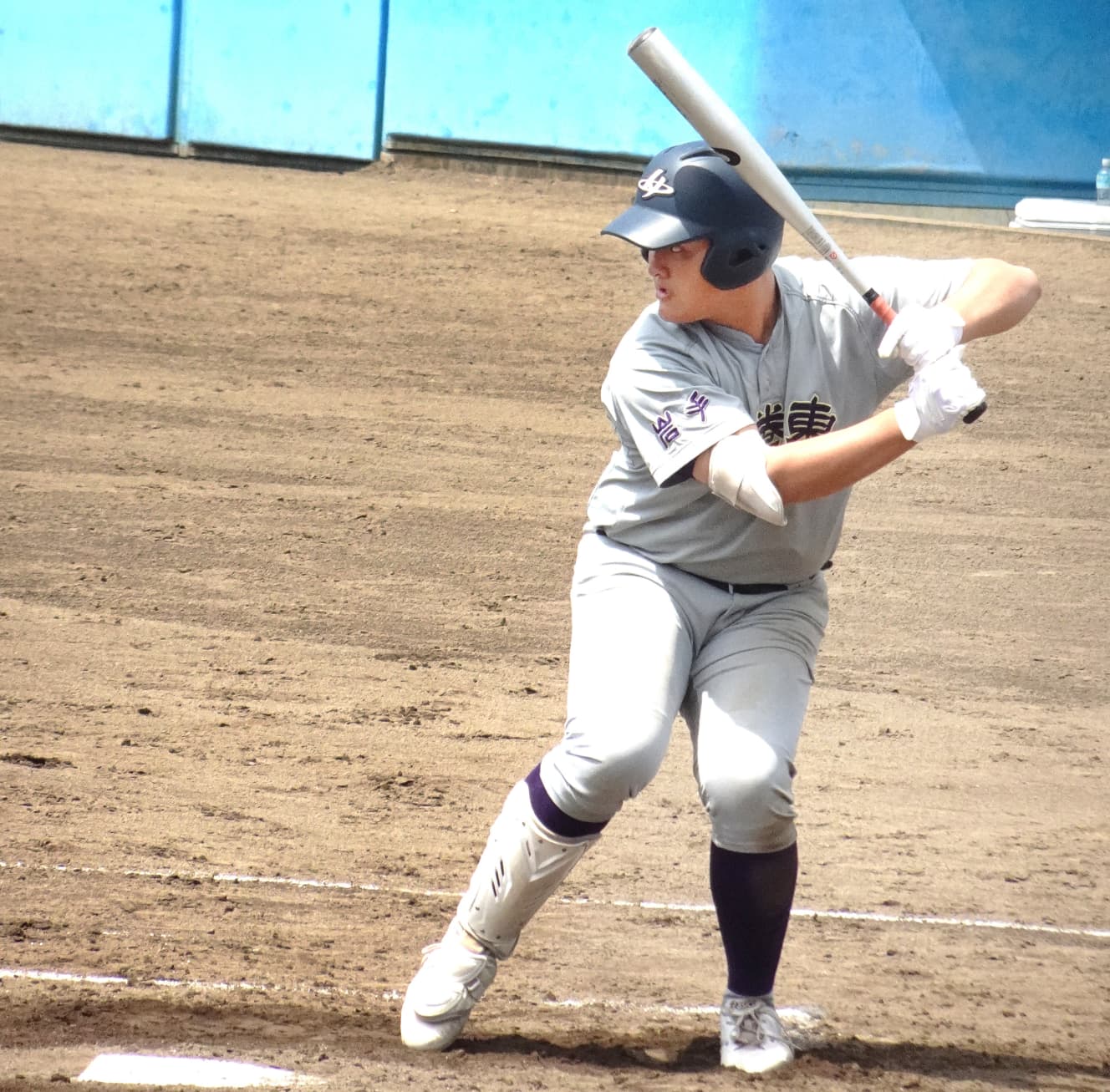Rintaro Sasaki, Hanamaki-Higashi: Where is the struggling “monster” now?
Two months have passed since the disappointing Senbatsu Tournament, in which he failed to hit a grand slam.

Rintaro Sasaki, 17, of Hanamaki-Higashi High School, winner of the Iwate Prefecture Spring Tournament, hit a shot to left field in the opposite direction in the quarterfinals against Morioka Daishi High School. When asked after the game how many home runs he had hit in his career, Sasaki replied, “Today’s home run was 67.
I hit 67 home runs today. A home run is an extension of a hit. I was happy that it went into the stands because it scored a run, and the wind was blowing from right to left, so I think I was able to bat in my own way, not against the wind or my own power.
Last December, Sasaki, who has been suffering from thoracic outlet syndrome (a disorder of blood vessels) that causes numbness and pain in the shoulders and arms, had surgery on both shoulders. However, six months have passed, and he honestly confessed that his condition has not improved.
The movement around my arms and shoulders is not good. This is the part that affects my swing the most, and I have been struggling with this after the Sembatsu. I’m consulting with my body and trying to cover up for it in areas other than hitting.
I had a theory before the opening of this spring’s Sembatsu tournament. Sasaki continues to attract attention as a monster slugger, but I wondered if he might not be able to hit a high, inside corner fastball over 135 km/h. I came to this conclusion last year in a game. I came to this conclusion in the quarterfinals of the Tohoku Tournament last fall against Sendai Ikuei. Against a good left-handed pitcher, I struck out the first batter in the first inning. Although he contributed to the team’s victory with two hits in four at-bats, his timing was not quite right on a fastball of around 130 kilograms that was thrown straight down the inside pitch.
His power and ability to accurately mitt loose balls is impressive, but the real test will be how well he can hit back balls of national-class quality.
And in the first game of the Senbatsu Tournament, where he was expected to explode, he suffered a defeat. The ace right-hander from Wakayama, Tsubasa Yoneda, a draft candidate, was tough and persistent from the first inning, gathering 140-kilometer balls inside Sasaki’s inner corner and hitting them low with a breaking ball in the 130-kilometer range.
His final at-bat came in the 9th inning with two outs and a runner at first base. Sasaki took an inside pitch on his right elbow and grounded out to first base. It might have been a ball that he could have avoided if he wanted to. Although he may not have intentionally tried to hit the ball, it would have been a greater threat to the opposing team if he had avoided the ball and stayed in the batter’s box than if he had walked on a dead ball. As a result, Sasaki ended up with four hits and no walks (two strikeouts).
About two months have passed since then. In the spring Iwate Prefecture tournament, there was a change in his hitting form. When he lifted his right knee for timing, his center of gravity was lower than it had been during the Sembatsu, and he swung his bat more compactly. From there, he took a cue from Barry Bonds with his upper swing.
I asked Sasaki if he had modified his swing with the assumption that he would be able to bounce back strong, in-course balls. When I asked Sasaki about this, he thought for a moment and then said, “Yes, that’s right.
Yes, that’s right. But I try not to focus too much on handling in-course balls. (Because I was attacked (in the Sembatsu), I tend to focus on the inside corner, but my first priority is not to think too much about it.
As Kotaro Kiyomiya (23, Hokkaido Nippon Ham) approaches the record of 111 high school home runs set during his days at Waseda Jitsugyo, expectations for Sasaki are growing even more fervent.
I am grateful that baseball fans are excited about my record and have high expectations for me, but I still want to contribute to the team’s victory without worrying about the record,” he said.
The spring of his sophomore year of high school has come to an end, and Sasaki’s high school baseball career has come to a close. I hope that he will be able to break out of his current struggle.


From the June 17, 2022 issue of FRIDAY
Interview and text: Yuji Yanagawa
Nonfiction writer
Photographs: Yuji Yanagawa (2nd and 3rd photos)